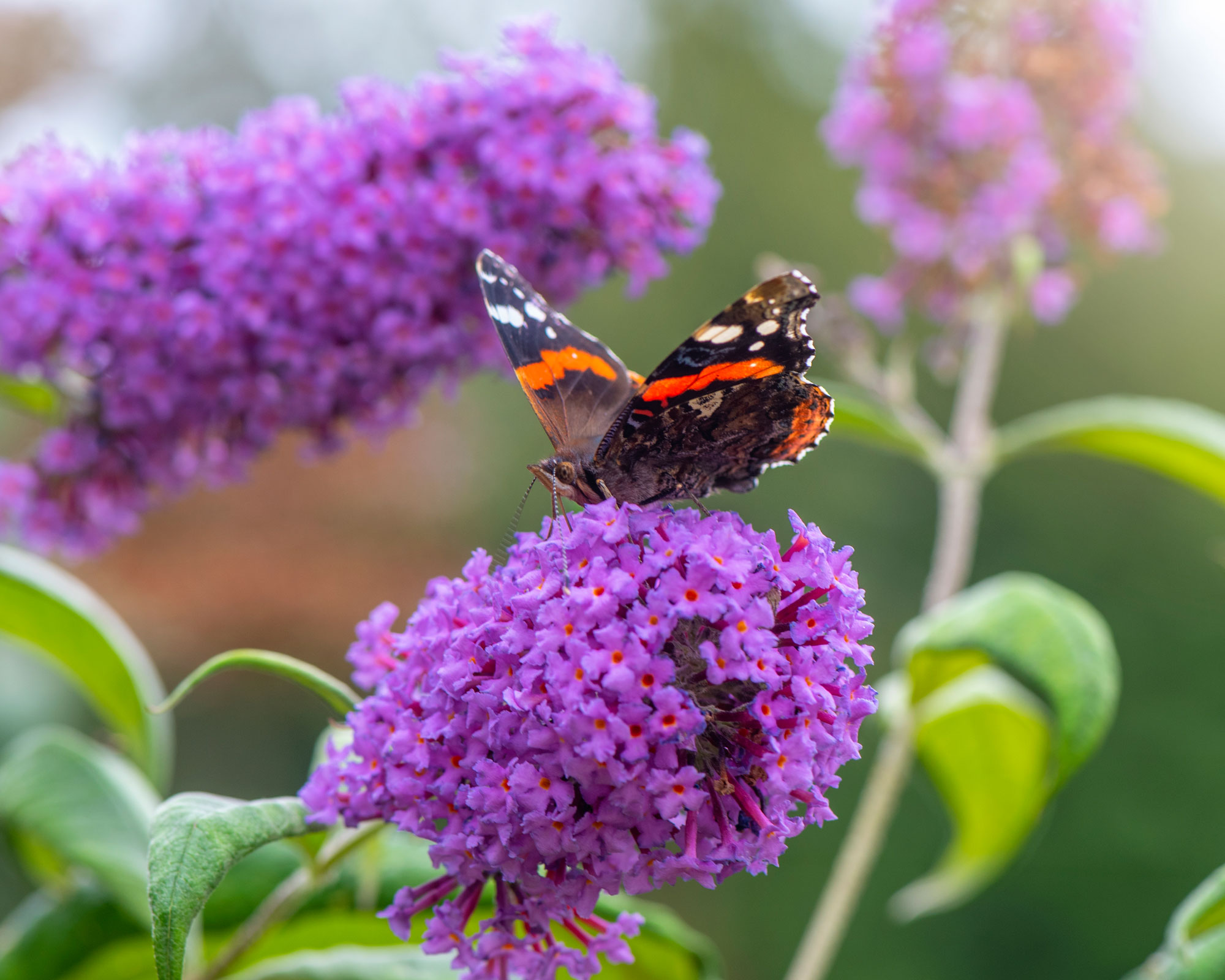How to care for a butterfly bush – get the best from buddleia
Discover how to care for a butterfly bush and bring colorful blooms and butterflies into your yard


Find out how to care for a butterfly bush and be rewarded with a gorgeous splash of color from late summer through fall. An easy and fast-growing shrub, its nectar-rich flowers are loved by pollinators, orioles, hummingbirds and – above all – butterflies.
Like the best evergreen shrubs, the butterfly bush provides plenty of interest. It’s perfect for adding impact to the back of borders, creating privacy and disguising less-than-lovely views.
It can provide a wide range of late summer color in shades varying from white, lilac, magenta and even orange and yellow, and as one of the best fast-growing shrubs, it won’t leave you waiting too long, either.
It's worth knowing, however, that the butterfly bush is on our list of invasive plants.
How to care for a butterfly bush
A flowering shrub, the blooms of a butterfly bush range in shape from dramatic spires (known as panicles) to intriguing spheres and are all made up of masses of tiny blooms. There’s even a variation of foliage color from silver grey to deep green.
Recent years have seen many new decorative hybrids coming on to the market, in all shapes and sizes. From the tall and stately shapes such as Buddleia davidii, to the arcing and graceful Buddleia lindleyana and Buddleia alternifolia there’s now a surprisingly wide selection for gardeners to choose from. There are even dwarf varieties available, ideal for planting in pots and as low hedging.
‘You can expect to buy buddleias at any time of year from garden centers and nurseries,’ say the team at the RHS. ‘Occasionally you'll also find smaller potted plants available – they just take a year extra to grow and flower well in the garden.’
Design expertise in your inbox – from inspiring decorating ideas and beautiful celebrity homes to practical gardening advice and shopping round-ups.
Learn how to care for a butterfly bush with our guide.
Where and when to plant a butterfly bush
It’s important to know how to plant shrubs, and the butterfly bush can survive in US HDSA zones 5 and above. A deciduous to semi-evergreen perennial, it will flower from late June through to fall. Preferring neutral and well-draining soil, it loves a sunny position.
The height and spread of varieties vary from miniature plants such as ‘Buzz’ and ‘Flutterby’, just 2 to 3ft (60 to 90cm) tall, going up to Buddleia davidii that reaches a stately 8 to 9ft (243 to 274cm). So be sure to choose the right plant for your yard.
Do be warned though, these fast-growing plants do appear on the invasive species list in some areas and can easily take over areas of wasteland and rail track. They have even been known to grow through brickwork and asphalt, if totally neglected.
For this reason, many gardeners learn how to grow butterfly bush in pots as a technique to limit their spread.
Although pretty hardy and self-sufficient, buddleia do have a relatively weak structure, so benefit from a sheltered spot. Avoid very windy and exposed sites as this can lead to broken branches and weakened roots.
How to prune a butterfly bush
Depending on the type you have, you may or may not need to know how to prune buddleia. Species buddleia doesn’t need to be cut back unless you wish to shape it or reduce it in size.
Some of the newer and smaller varieties will benefit though, as the team at Plant Delights Nursery suggest. ‘Large buddleia hybrids will benefit from yearly pruning as they are weak-wooded and tend to split with age,’ they say. ‘Many of the commonly grown Buddleia davidii hybrids grow too large for the number of roots they produce. If they are not pruned annually, they will sometimes blow over in the wind. Also, most of the Buddleia davidii cultivars flower on new wood and therefore can be cut hard in late winter to stimulate flowering. We generally cut them back to 1 to 2in (2.5 to 5cm) tall, but many can be cut to the ground and will recover fine.’
If you are going to trim back this ornamental shrub, the best time to prune is spring, before the new growth starts. Always avoid cutting back in fall or winter as this can lead to stress and many fewer blooms the following year. Cut out any dead wood, too, and it’s also worth taking out any thin, spindly stems or crossing branches as these can reduce the plant’s growth and look untidy.
How to keep a butterfly bush looking good
‘Buddleia usually bloom continuously throughout late summer and fall, stopping only with the first frost,’ say the team at Longfield Gardens. ‘Removing spent flowers will keep the plant looking neat and encourage additional blossoms. To deadhead, cut the stem back to the first set of leaves, several inches below the flower.’
Can you grow a butterfly bush in a pot?
You can grow a butterfly bush in a pot and caring for a butterfly bush in a container is straightforward if you follow a few guidelines. These fast-growing plants need plenty of space for their roots to spread, so opt for the largest pot you can accommodate. Make sure the planter also has plenty of drainage holes to avoid waterlogged soil, which can lead to root rot.
Choosing a dwarf variety for a pot is a great idea. Growing up to 2 to 3 ft (60 to 90cm), they make a stunning patio feature, particularly when their fountain style branches are laden with blooms. Popular names to look for include ‘Flutterby petite’, ‘Minature’ and ‘Buzz’.
Fill the container with a lightweight commercial compost, before planting and apply a slow-release fertilizer in spring or a liquid feed between April and September.
Container-grown plants will need watering regularly, especially during hot weather. They will also need extra protection during frosty spells to prevent the roots from dying off. Wrapping the pot with horticultural fleece or bubble wrap is a great solution.
Are butterfly bushes prone to pests and diseases?
Generally tough and easy to care for, butterfly bushes tend to stay strong and healthy if well looked after. Spider mites can be a problem, but they are usually only attracted to stressed plants. Keep buddleia well-watered and occasionally feed with a liquid fertilizer to combat this.
Avoid chemical sprays as these can affect the butterflies and insects that you are trying to attract.

Journalist Jill Morgan has spent over 20 years writing and editing gardening, interior and property features. Titles she has worked on include The English Home, House Beautiful, Ideal Home, Houzz and Modern Gardens and she writes regularly for H&G as a Contributing Editor. Whilst she is a dab hand at renovation projects and DIY, she is happiest when out digging in the garden or planning a new border.